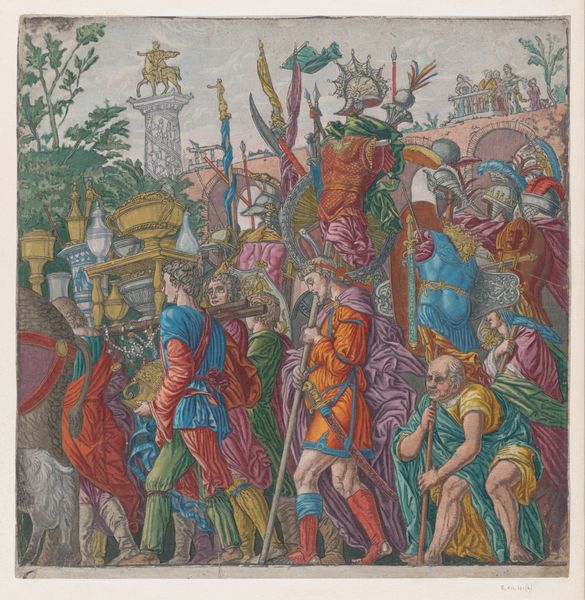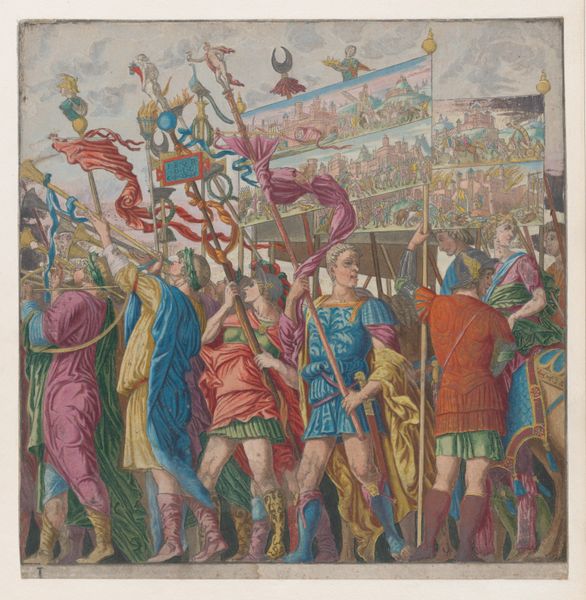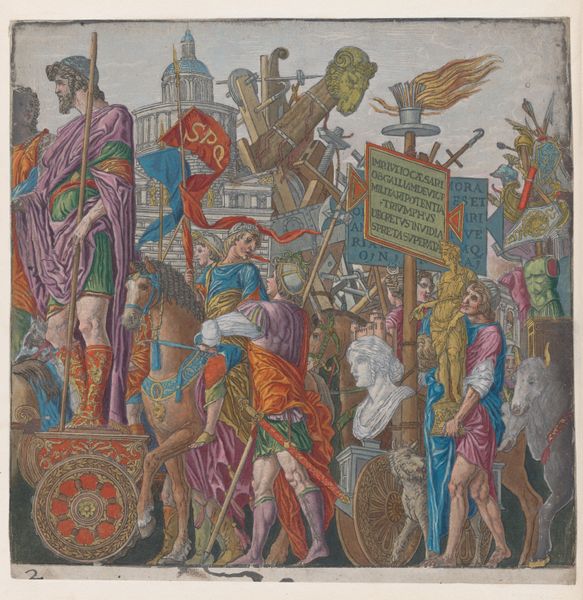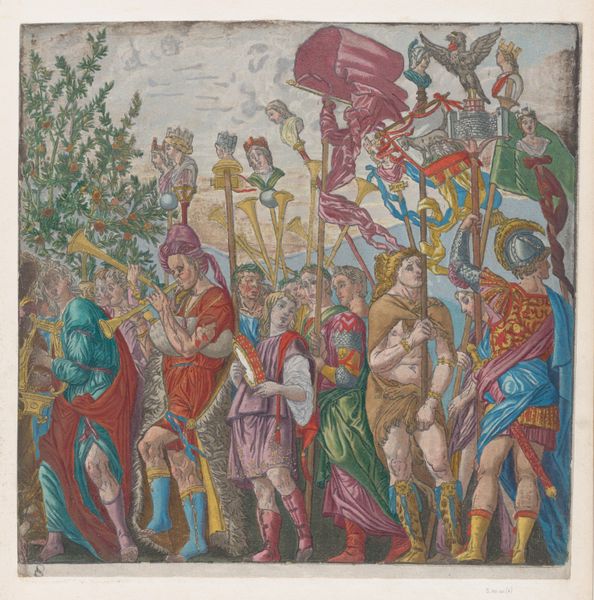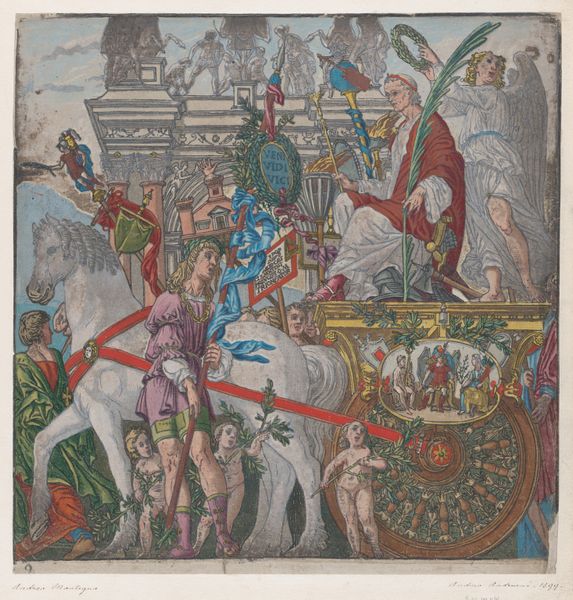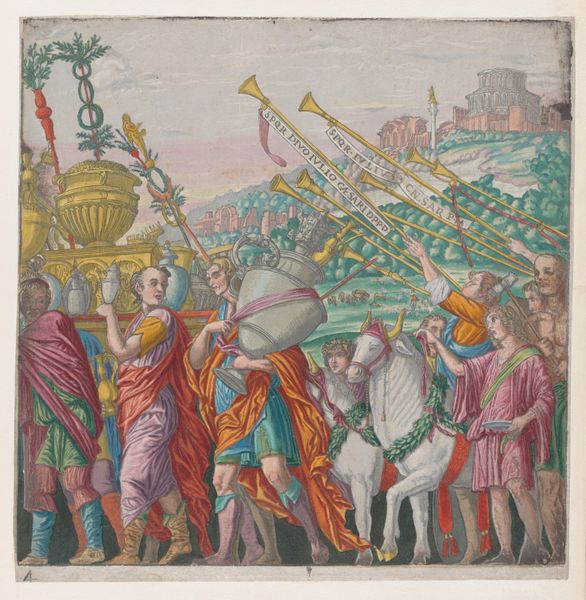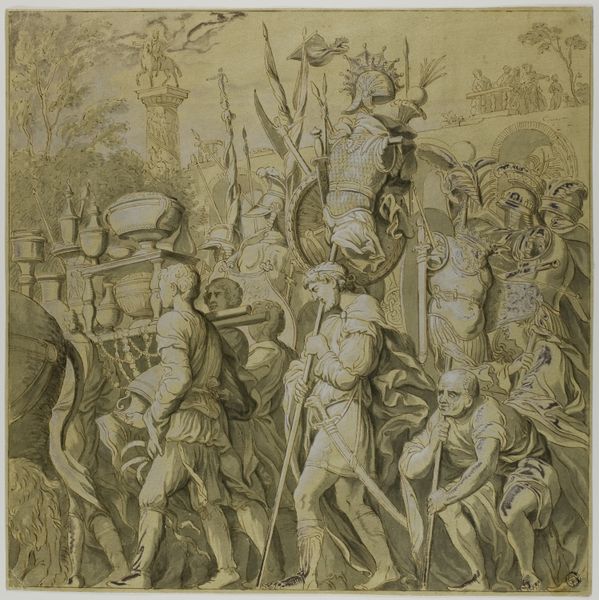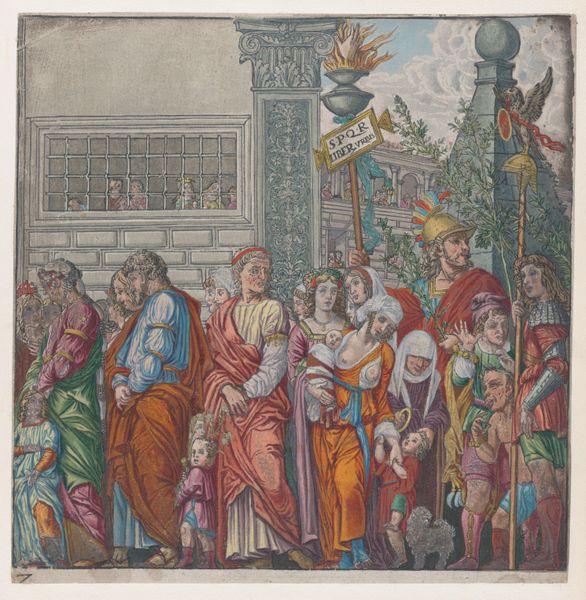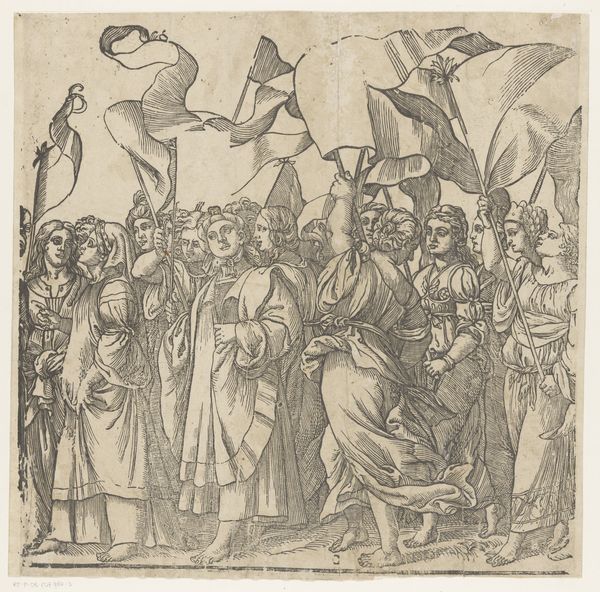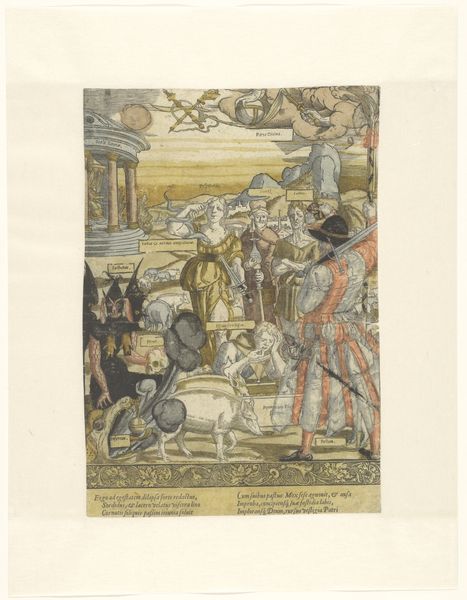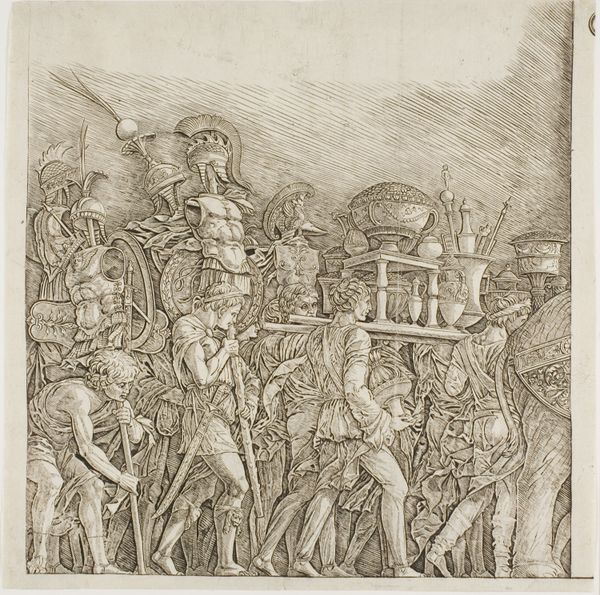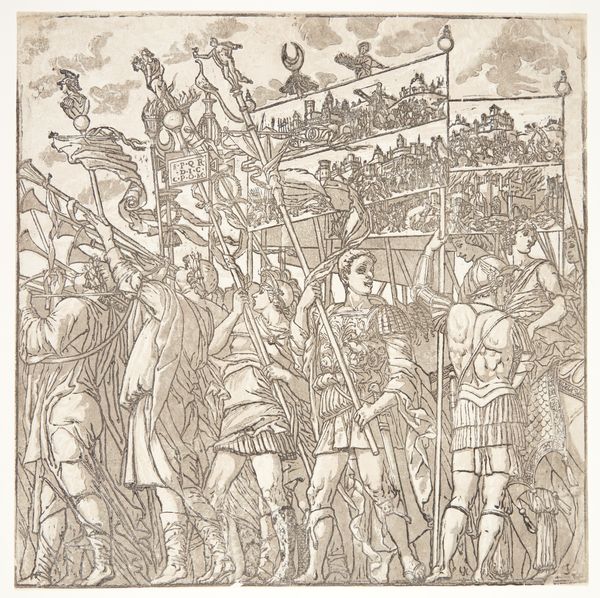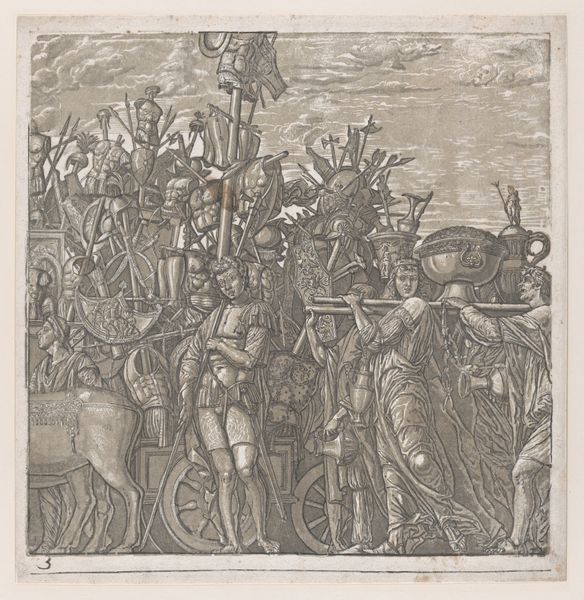
Sheet 3: Trophies of War, from "The Triumph of Julius Caesar" 1599
0:00
0:00
drawing, print, engraving
#
drawing
#
allegory
# print
#
landscape
#
figuration
#
history-painting
#
italian-renaissance
#
engraving
Dimensions: Sheet: 14 15/16 × 14 13/16 in. (38 × 37.6 cm)
Copyright: Public Domain
Curator: Ah, welcome. Let’s consider “Sheet 3: Trophies of War, from ‘The Triumph of Julius Caesar,’” an engraving done around 1599 by Andrea Andreani. You can find it here at the Metropolitan Museum of Art. Editor: The first thing that strikes me is the overwhelming amount of *stuff*. It feels less like a victory parade and more like…well, moving day after a really successful raid! Curator: It's fascinating to see how Andreani represents Roman triumph, focusing less on Julius Caesar himself, and more on the material spoils of war. This print comes from a series that attempts to recreate a larger, now lost, work. Editor: Lost, you say? I like the ghostliness of that… gives it this haunted quality, like we're peering into a half-remembered dream of power. And look at those figures lugging everything around, their expressions! No joy, just weary resignation. They humanize the loot in a strange way. Curator: Indeed, and the original "Triumph" was designed by Andrea Mantegna, known for his meticulous depictions of classical subjects, which aimed to emphasize the emperor's greatness through the display of captured artifacts. Andreani made the work accessible via print, spreading it beyond an elite audience. Editor: It makes you think about the relationship between art and power, doesn’t it? How the act of representation, even in a print like this, participates in constructing and perpetuating certain narratives. I mean, victory looks like a LOT of heavy lifting and questionable color choices. Curator: Precisely! These images served a crucial propagandistic role in early modern Europe, not unlike imagery in our own moment, framing narratives of empire and authority. Editor: So, beyond just documenting "stuff," it was all about creating an impression, a lasting idea of Roman supremacy...it’s like they were staging a movie set from the past, and Andreani, centuries later, offered this Technicolor postcard from the shoot. I find that fascinating! Curator: A very apt description, I must say. It’s an interesting point to consider how we grapple with these displays of triumphalism and, also, its lasting power and cultural impact. Editor: A final thought. If triumph always involves carrying a ton of baggage – literal and otherwise – I hope we can learn to travel a little lighter. Thanks for the illuminating peek into the past. Curator: My pleasure, hopefully, we’ve given people much to ponder today.
Comments
No comments
Be the first to comment and join the conversation on the ultimate creative platform.
